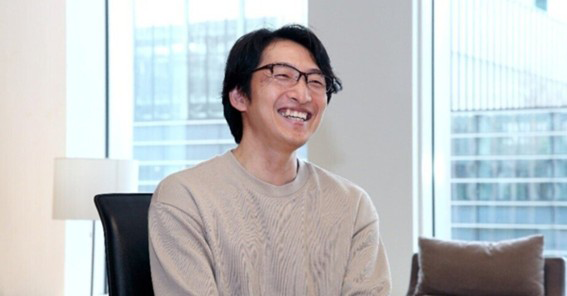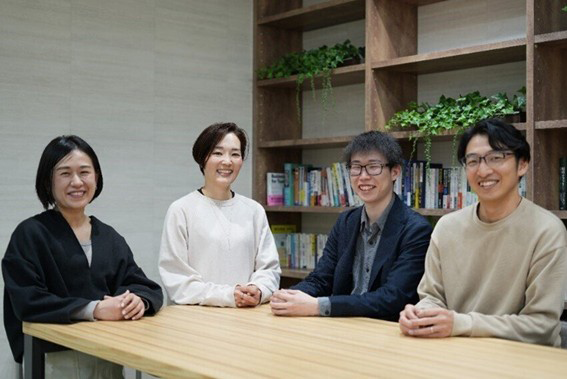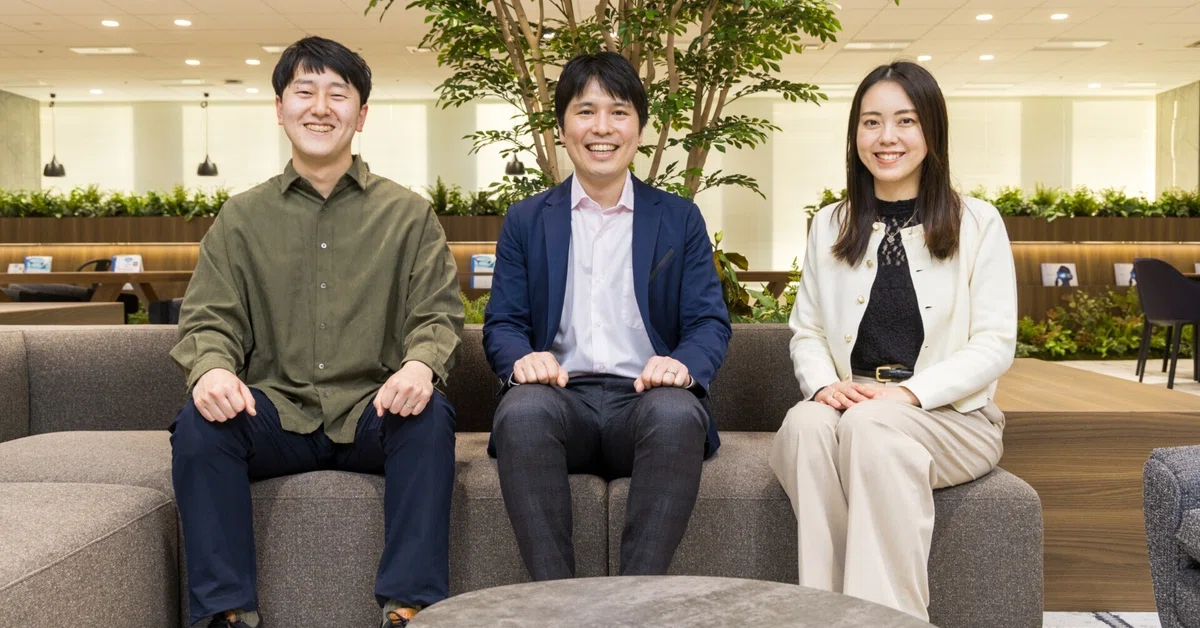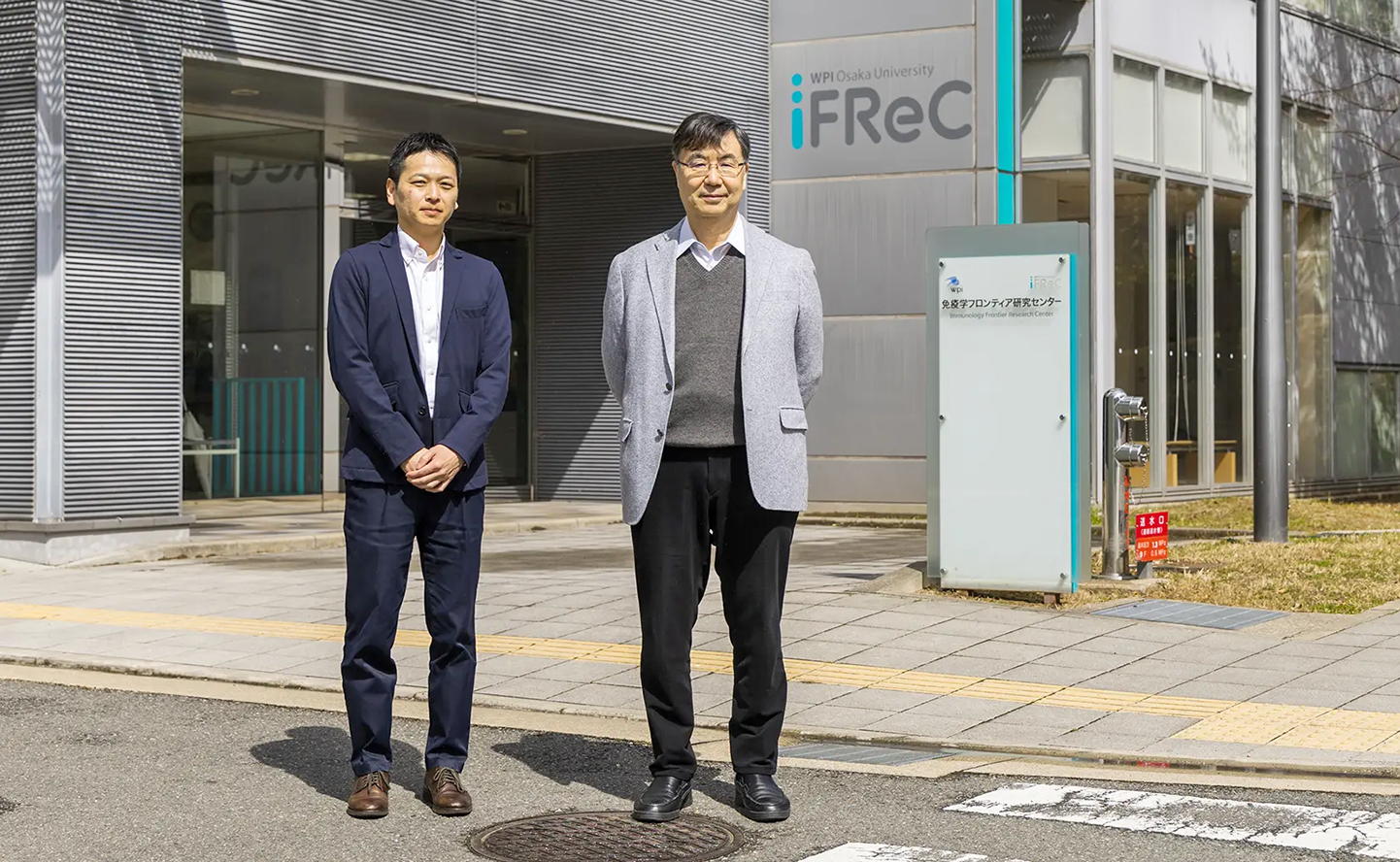Realizing patient-centric clinical trials with DX. Decentralized clinical trials (DCT) initiative to achieve patient-centricity and more efficient clinical studies simultaneously
- R&D
- DX
- Clinical Trials

“We want to create a society that enables the choice of clinical trial methods that are closer to patients. The realization of DCT is expected to lower the geographical and psychological barriers to participating in trials and speed up the development of new drugs,” says Shunichi Udagawa of the Translational Research Division’s Early Clinical Development Department. To obtain approval for new drugs, pharmaceutical companies undertake clinical trials to confirm their safety and efficacy. As an initiative to alleviate the burden on patients of visiting the hospital and to shorten the duration of drug development, Chugai Pharmaceutical is promoting decentralized clinical trials (DCT), which leverages digital technologies and differs from conventional clinical trials. For this article, we interviewed employees on the team that is leading the introduction of DCT in Japan and overseas to learn about the value that DCT offers patients, the challenges faced in spreading DCT, and the future that they aim to achieve.
*Reproduced from Chugai Pharmaceutical’s official Note website (https://note.chugai-pharm.co.jp/) Article details and employee positions are current as of April 2024.
- What is a decentralized clinical trial (DCT)?
Udagawa: Unlike the conventional clinical trials that are conducted by having the patients visit a medical institution, DCT is a method of clinical trial that does not always require such visits. It is also described as “visit-free clinical trial.”
In conventional clinical trials, almost all processes, from briefing the participants (subjects) and obtaining their consent to prescribing and administering (e.g., by injection) the investigational drug and conducting the various tests, are performed at a medical institution, requiring the subjects to visit in person.
In other words, we could say that all of the resources and processes related to the clinical trial are concentrated with the medical institutions. DCT, on the other hand, is a new approach to clinical trials that concentrates those resources and processes with the subjects. This is achieved by sending out the investigational drug, conducting telehealth and mobile nursing visits, and having the subjects wear digital devices.
- What kind of value do you think the introduction of DCT will be able to offer patients?
Udagawa: The greatest benefit for subjects is that the burden of visiting the medical institution in person to participate in the clinical trial will be alleviated, allowing the clinical trial to be conducted flexibly in a way that suits each individual.
Moreover, another benefit that we can expect is the shortening of the duration of drug development. With the introduction of DCT, patients who previously were unable to access clinical trials will be able to participate, making the process of recruiting subjects more efficient. Ultimately, this will shorten the duration of the clinical trial as a whole, which may mean being able to deliver new drugs to patients more quickly.
- How do digital technologies such as wearable devices help?
Udagawa: With DCT, we ask the subjects to use digital devices such as smartphones and wearable devices, and we are working to have the measured data monitored by the medical institutions.
Through the use of such digital biomarkers (markers that, using the data obtained from digital devices, provide objective visibility to the presence or absence of disease and changes resulting from treatment), it is possible to ascertain changes in the subjects in real time. As the data obtained from such devices improves in terms of both quality and quantity, the hope is that detailed care can be provided for each subject individually.
- Apparently, Japan is behind in terms of the spread of DCT. What are the reasons for that, and how will this problem be solved?
Udagawa: Certainly, the spread of DCT in Japan has been slower than other countries, particularly the United States. However, in the course of talking to the doctors and clinical research coordinators (CRC) at the medical institutions that cooperate with our clinical trials, I have sensed a change, namely an increase in interest in and expectations for the introduction of DCT.
One reason for the lack of progress in the introduction of DCT is the need to alter existing clinical trial processes and systems. The introduction of DCT will require the healthcare workers involved in clinical trials to learn new actions and operations, such as setting up new digital devices, explaining them to subjects, and backing them up. There is also the cost barrier, such as additional one-off costs of introduction, for the clinical trial sponsors. In addition, some subjects feel a greater sense of reassurance and satisfaction by communicating face-to-face with the healthcare professionals. For this reason, we need to plan DCT that is closer to the needs of these kinds of subjects.
Also, when we explained DCT to the clinical trial staff at medical institutions, we learned that, even though they agreed with its significance, there were still various hurdles and concerns when it came to actually implementing it.
From such experiences, we are making the effort to talk frankly with stakeholders involved in clinical trials, including the doctors, CRCs, and service providers, to share with them the significance and expected benefits of introducing DCT and deepen their understanding. We all have the common goal of offering the best clinical trials for the subjects, and, even if there are challenges, once the right direction becomes clear, we believe that the introduction of DCT will spread.
.
- Could you describe Chugai Pharmaceutical’s policy for its DCT initiatives?
Udagawa: Members from the many functions involved in clinical development, as well as the safety and regulatory affairs functions, have come together to promote DCT as a kind of taskforce. Broadly speaking, we have three guidelines for action.
The first is to promote the consideration of DCT introduction and to accumulate experience in responding to such consideration.
The second is to share our DCT experiences, including cases in which things did not go well, proactively both within and outside the company. In doing so, we hope that it will lead to the promotion of DCT across the entire healthcare sector, including other pharmaceutical companies, not only Chugai Pharmaceutical.
The third action guideline is to never stop coordinating with stakeholders, strengthening relationships with them, and discussing the future. By combining the experience and expertise of the people involved in clinical trials from various standpoints, we believe that we will be able to achieve the realization of patient-centric medical care through the spread of DCT in ways that we could not hope to achieve on our own.
- Could you give us some examples of the introduction of DCT?
Udagawa: At Chugai Pharmaceutical, we are conducting multiple DCT introduction pilots in clinical trials and clinical research both here in Japan and overseas. Overseas (United States), we conducted a fully remote DCT, which involved no medical institution visits whatsoever, from subject registration to completion of the trial. Because the entire clinical trial process was conducted in the subjects’ homes, we were able to attract subjects from all over the United States.
In Japan, we conducted an approach known as “eConsent,” in which the subjects’ written informed consent was obtained using electronic methods after the details of the trial were explained to the subjects and they understood the advantages and disadvantages. Informed consent for clinical trials is a requirement for the protection of subjects’ human rights. The conventional process was for subjects to visit the medical institution, receive a written explanation, and sign the consent form. With eConsent, however, it can be obtained at other locations besides the medical institutions through the use of texts, videos, and occasionally telehealth, which we can expect to alleviate the burden of medical institution visits on subjects.
- What has been the response of subjects and the medical institutions to eConsent?
Udagawa: In the pilot, the explanation of the clinical trial using a video was very well received. We were given feedback that supplementing the explanations with animations and audio allowed for deeper understanding of the clinical trial, which helped to dispel subjects’ uncertainty. On the other hand, we received feedback from the medical institutions about the confusion and burden of obtaining consent with the use of digital devices, including problems with operating the system and unforeseen equipment problems, and they said that they preferred the more familiar paper-based process.
We think that the cause for these concerns was that we simply replaced the paper-based part of the informed consent process with digital devices. From this experience, we felt that, not confined to eConsent, if we undertake a fundamental review of the conventional clinical trial processes that are premised on the use of paper, we should be able to demonstrate fully the expected benefits of DCT.
- Could you tell us what you have learned from your experiences so far and what the outlook is for the spread of DCT?
Udagawa: Since starting our pilots, we feel that the distance between the various professionals involved in clinical trials, including at the medical institutions, and we employees of Chugai Pharmaceutical has shrunk, and that, faced with the great challenge of introducing and spreading DCT, we have become a united team that transcends the boundaries of positions and companies. We have learned that it is of immense importance that we get stakeholders involved in clinical trials to feel that, if it is with Chugai Pharmaceutical, they will be able to proceed with DCT, and that we continue taking on challenges together and sharing our experiences.
In terms of future prospects, our aim is for clinical trials that transcend regional, and even national borders by spreading DCT and establishing conducive environments. Global clinical trials are already being conducted, with subjects in multiple countries and regions participating in clinical trials conducted by medical institutions in their country of residence. By putting DCT to use, there may come a day when people living in Japan are able to participate in the clinical trials of other countries, and, conversely, people living outside Japan are able to participate in Japanese clinical trials.
There are many challenges, such as how to guarantee subjects’ safety and how to comply with the various regulations that differ from country to country, but we will continue to embark on our challenge for the realization of patient-centric medical care.
Interview and text
Rieko Kurumi (Digital Strategy Promotion Department, Chugai Pharmaceutical)
Profile
Shunichi Udagawa (Early Clinical Development Department, Translational Research Division): Joined the company in 2007. Works in clinical development. After stints as Study Leader and Clinical Leader in early clinical development, he is now involved in cross-functional taskforces and projects aimed at building better clinical trial environments and operational improvements.



